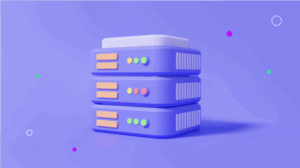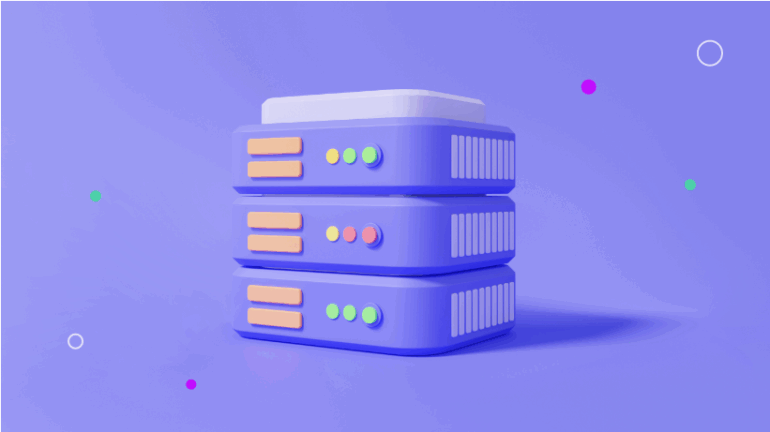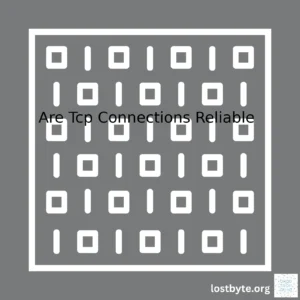
| Layer | Description |
|---|---|
| Application Layer | Interfaces with software applications implementing communication protocols. |
| Transport Layer | Responsible for managing end-to-end control and error-checking. This includes packet reordering, delivery monitoring, etc. |
| Network Layer | Concerned with overseeing IP operations including routing, addressing, etc. |
| Data Link Layer | Defines network protocol specification within the data link and handles error detection/correction in the physical layer. |
| Physical Layer | Handles the physical transmission of data such as electrical specifications, pinout & wire-layout on connectors, etc. |
TCP/IP Stack’s first layer, the Application Layer can be likened to a translator: it helps ensure that applications on the client side are able to understand and interpret data received from servers. Common application layer protocols include HTTP (for web browsing), SMTP (for email), and FTP (for file transfers).
The Transport Layer comes next. Here, TCP (Transmission Control Protocol) or UDP (User Datagram Protocol) take over, processing data and ensuring safe passage between sender and receiver. TCP ensures reliable data delivery by providing error checking and re-sending dropped packets, while UDP sends without these checks, offering faster but less reliable communication.
Then we have the Network Layer where IP (Internet Protocol) resides. It’s responsible for moving packets of data from node to node. Here, logical addressing (like the everyday IP addresses we see) is involved, leading the way for routing of packets across networks.
Next in line is the Data Link Layer where protocols such as Ethernet and PPP reside. It describes how data should be sent to the network. This involves the physical addressing (MAC addresses), bundling of raw bits into frames, and error detection and correction when these frames are sent.
The final layer is the Physical Layer which puts the frames onto the hardware medium by converting the digital data into signals appropriate for the chosen network technology (wired, optical fiber, wireless, …). Its key defining feature is that it deals purely with hardware specification details such as electrical, mechanical, procedural, etc.
Each of these layers communicates only with its neighboring layers, and this encapsulation allows for modular architecture where changes in one layer doesn’t impact others. Understanding this foundational aspect of networking is not just important for passing the Cisco Certifications, but also benefits all who work with internet-facing services. For coders especially, knowing the TCP/IP model can clue you in to potential bottlenecks or limitations in your software due to network constraints.
A simple Python script to simulate how each layer adds its own information to the packet (also known as Protocol Data Unit (PDU)) could look something like this:
def tcp_ip_stack_simulation(): pdu = 'Your message' # Application Layer pdu += ' - Application layer data' # Transport Layer pdu += ' - Transport layer data' # Network Layer pdu += ' - Network layer data' # Data Link Layer pdu += ' - Data Link layer data' # Physical Layer pdu += ' - Physical layer data' return pdu print(tcp_ip_stack_simulation())
When run, this code would append text representing each layer’s additional data to the original ‘message,’ simulating the process that occurs as data passes through the TCP/IP stack.When we dive into the complex arena of computer networking, one concept that is repeatedly discussed and comes to the fore is the TCP/IP Stack. Named after its foundational protocols, Transmission Control Protocol (TCP) and Internet Protocol (IP), this model plays a crucial role in achieving coherent and reliable data exchange in networks. It contains multiple layers each with specific tasks relating to applications, transport, internet, network access and physical elements.
1. Application Layer
The top-most layer, the Application Layer, interacts directly with the software application. Protocols like HTTP, FTP, SMTP, DNS, etc., fall under this layer and are recognized by end-user applications for carrying out network activities. The data generated at this level is managed by high-level protocols without worrying about the details of how data will be transferred over the network.
HTTP.request("www.google.com", "/search?q=cats")
2. Transport Layer
Following the Application Layer is the Transport Layer. This layer is responsible for establishing connections between the two systems and ensuring the reliability of these connections. It achieves this through the TCP and UDP protocols. While TCP ensures that messages are received in order and without errors, UDP does not offer such guarantee but it’s more efficient speed-wise for real-time applications. The user datagram protocol (UDP) and the transmission control protocol (TCP) operate in this layer.
* Creating a socket connection socket = Socket.new(AF_INET, SOCK_STREAM, 0) remote_addr = Socket.pack_sockaddr_in(80, 'example.com') socket.connect(remote_addr)
3. Internet Layer
Third on the list is the critical Internet Layer, where IPs operate. It is responsible for sending packets across the network, from the originating host to the destination host based on their IP addresses. Routing decisions are made at this layer and thus, it forms the largest part of our discussion here. This layer is responsible for packet forwarding including routing through different routers.
* Setting IP headers ip = IP.new ip.saddr = "192.168.1.100" ip.daddr = "192.168.1.1"
4. Network Access Layer
Also known as the Network Interface Layer or Link Layer, the Network Access Layer specifies how data should be sent physically through the network. This includes planning for how data will be distributed via the physical hardware, whether fiber cables, WiFi or others. Rules for hardware addressing, for example MAC addressing in Ethernet networks, belong to this layer.
#MAC Address Lookup
import uuid
print ("The MAC address in formatted way is : ", end="")
print (':'.join(['{:02x}'.format((uuid.getnode() >> ele) & 0xff)
for ele in range(0,8*6,8)][::-1]))
5. Physical Layer
The final layer is the Physical Layer. At this level, ones and zeros transform into signals which go out on the wire, fiber, or air. Basic hardware, modems, hubs, cabling and the like come under this category.
In sum, understanding these five layers of the TCP/IP stack assists you in comprehending how networked devices communicate amongst each other and successfully send information from one point to another.
Explore more on the functioning of TCP/IP Stack from informative sources Mozilla Developer Network & IBM Cloud Education.Delving deeper into the link layer, it’s important to understand where it stands within the broader context of the TCP/IP model. The TCP/IP (Transmission Control Protocol/Internet Protocol) model comprises five layers:
- Physical Layer
- Data Link or Network Access Layer (also known as the Link layer)
- Network or Internet Layer
- Transport Layer
- Application Layer
Underneath the abstraction of network protocols and services, we find the Data Link or Link layer, a crucial component in the communication model that plays a significant role in data transfer.
The Link layer serves as an intermediary between the physical network medium, such as wires, cables, and radio signals, and the complexities of the Network layer, offering reliable data transfer across the physical media.
Some key characteristics of the Link layer include:
- Data Framing: Data from the Network or Internet layer is packaged into units known as frames. Each frame is composed of a data field – which contains raw binary information – as well as address fields that specify the source and destination nodes.
- Physical Addressing: This layer handles the translation of logical network addresses and names to physical MAC (Medium Access Control) addresses. It’s this address that allows for specific targeting on a network.
- Error detection and correction: During the framing process, techniques like Cyclic Redundancy Check (CRC) are applied for error control on the networks. They ensure that frames are undamaged and complete before passing them up to the upper layers in the TCP/IP stack.
- Access Control: When multiple devices are connected to the same physical medium, they help organize and control each device’s access to the medium to prevent collisions. Methods such as CSMA/CD used by Ethernet are employed at this level.
An example of a Link layer protocol would be PPP (Point-to-Point Protocol), often used for direct connections over serial cables, phone lines, or cellular wireless connections.
Here’s a snippet of a typical PPP frame for illustration:
7E FF 03 C0 21 01 01 00 0F 07 05 04 02 06 08 15 A9 7E
Above, ‘7E’ are the opening and closing Flag Sequence and while the rest corresponds to Address, Control, Protocol, Information, and Frame Check Sequence fields respectively.
Looking past its individual functions and position within the TCP/IP model, the bigger picture reveals how the Link layer provides the vital connection between the software procedures of the upper-layer functionalities and the electrical signals buzzing along the physical wire – enabling us as users to send an email, browse a webpage, or join a video call without worrying about these complex interactions happening behind the scenes.
This deep dive into the Link layer within the TCP/IP model should provide a clearer understanding of its functionality and place in the overall process of network communication (source).
The TCP/IP model has a layered concept, which can be divided into four or five layers, depending on the model you’re referring to. However, since you have specifically mentioned the 5 layers, we’ll focus on:
- Physical Layer
- Data Link Layer
- Network Layer (or known as Internet Layer)
- Transport Layer
- Application Layer
Each of these layers has specific functions and responsibilities that contribute to the overall functionality of this interconnected network protocol suite. However, let’s talk in more detail about the interesting layer being asked – the Internet layer.
The Internet layer, also commonly referred to as the network layer, is a pivotal part of the TCP/IP model. It allows host-to-host communication across potentially multiple networks. In essence, this layer deals with the transmission of packets over the network and their routing through intermediate routers.
Here are some key responsibilities of the Internet layer:
- Host Determination: The Internet layer is responsible for identifying the best available path for data packets to reach their intended destination. It does this by using IP addresses.
- Packaging and Routing: As the name suggests, it packages raw data – coming from the transport layer – into packets. These packets are labelled with source and destination IP addresses and are then routed across complex networks.
- Error Checking: The Internet layer deploys an error control mechanism to manage issues that may occur during packet transmission. This provides reliability to ensure data delivery.
This layer primarily makes use of two protocols, Internet Protocol (IPv4 or IPv6) and Internet Control Message Protocol (ICMP). Here’s a sample code that shows how an IPv4 header would look like:
struct ipheader {
unsigned char iph_ihl:5, iph_ver:4;
unsigned char iph_tos;
unsigned short int iph_len;
unsigned short int iph_ident;
unsigned char iph_flags:3, iph_off:13;
unsigned char iph_ttl;
unsigned char iph_protocol;
unsigned short int iph_chksum;
int iph_sourceip;
int iph_destip;
};
The Internet Layer is key to the TCP/IP model as it allows not only local, but also network-wide communication. For instance, it’s the functionality on this layer that enables a computer in Singapore to communicate with another in New York.
When applying these concepts in programming or networks infrastructure design, understanding the distinct roles of each layer and their unique contributions to the overall communication process could be instrumental in building secure, efficient, and robust systems.
For additional reference, you can visit this detailed conceptual, logical breakdown of the TCP/IP model.









